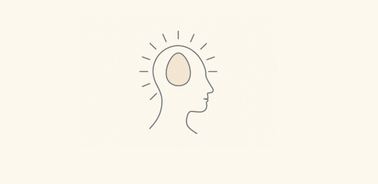From instinct to intuition: creativity as operating system

By Raquel Loga
As part of IE Center for Health & Well-being Well-being Mondays, professor Baruk Corazón, co-creator of the Bachelor in Fashion Design and faculty member at the School of Architecture and Design, delivered a thought-provoking session that explored creativity not as a trait or talent, but as the foundational operating system of human life. The talk offered a deeply layered reflection on what creativity is, how it functions, and why its alignment with purpose and compassion is vital in today’s world.
Creativity: A Default State, Not a Luxury
Corazón began with a provocation: we are not merely capable of creativity, we are wired for it. This capacity is not reserved for artists, designers, or innovators; it is the cognitive and existential infrastructure through which humans interpret and build the world. Citing Betty Edwards’ influential work Drawing on the Right Side of the Brain, he challenged the myth that creativity is a rare gift, arguing instead that it is a latent ability available to all, if we are willing to access it through practice and awareness.
From the first tools to the invention of fire, from cave paintings to mythology, Corazón traced creativity as a force intimately tied to the evolution of our species. It is, he claimed, what allowed homo sapiens to imagine Gods, currencies, and nations, what Yuval Noah Harari famously framed as humanity’s superpower: the ability to believe in shared fictions.
Purpose: The Engine of Creative Action
While creativity may be innate, it is not automatic. What activates it, Corazón insisted, is purpose. Purpose functions as a kind of internal gravity, a motivating force that shapes how and why creative ideas emerge. Drawing on etymologies that link motivation and motion, he emphasized that we create not only from need, but from longing, desire, and the search for meaning.
In this sense, creativity is not simply about novelty or invention. It becomes transformative when directed by moral ambition. Referencing Rutger Bregman’s work on the erosion of altruistic purpose in younger generations, Corazón argued that creativity divorced from ethical orientation often results in disconnected or even harmful systems. Conversely, creativity grounded in compassion can lead to innovation that is socially and spiritually expansive.
The Egg and the Map: Modeling the Creative Process
To illustrate the inner workings of creativity, Corazón offered two compelling metaphors: the egg and the map. The egg serves as a biological parallel, raw potential becoming life through a process of incubation, transformation, and emergence. So too with ideas. Creativity, he explained, unfolds in three phases: awareness (gathering and sensing), awakening (gestation and internal struggle), and activation (manifestation).
He dubbed these the "Three A’s of Creativity": Awareness, Awakening, Activate, a cycle that mirrors not only biological processes but also meditative states. Indeed, much of the talk explored how creative insight often arises not through effort, but through letting go. The mind must shift from control to openness; creativity, like breath, cannot be forced but must be invited.
In this context, mindfulness and meditative attention are not luxuries, they are essential conditions for accessing what Corazón called “the observing mind,” the self that exists beyond the limits of immediate perception. Through a brief guided meditation, participants were encouraged to move from reacting to reality to consciously observing it, thus gaining the ability to redraw its contours.
Game Changers and Imaginal Cells
Drawing on both evolutionary biology and marketing theory, Corazón connected the slow, nonlinear arc of creative transformation to the concept of imaginal cells, the tiny minority of cells that trigger the metamorphosis from caterpillar to butterfly. Similarly, in social change theory, Everett Rogers’ diffusion model shows how new ideas spread from a few early adopters to the mainstream. Game changers, from Gandhi to Mandela to Jobs, begin not by modifying existing rules, but by shifting the very game board.
True creativity, then, is a political and ethical force. It requires courage, persistence, and the willingness to withstand resistance. It begins with the individual but radiates outward through networks of meaning, belonging, and collective imagination.
Creativity in the Age of AI
Asked about the role of artificial intelligence, Corazón offered an optimistic stance. AI, he noted, is the product of our analytical mind, a simulation of the left hemisphere's functions. But real creativity arises when we engage the right hemisphere: intuition, emotion, embodied knowledge. AI may assist, but it cannot replace the embodied, value-driven intelligence of human imagination.
In his words, we are moving from an age of information to an age of attention, and creativity is the compass that allows us to navigate this transition without losing our humanity.
Cultivating the Creative Self
The session concluded with practical insights from Nobel Laureate Ardem Patapoutian on how to nurture creativity:
• Avoid being constantly busy: create space to think.
• Shift disciplines to gain new perspectives.
• Surround yourself with honest, constructive critics.
• Embrace curiosity and allow for free, unstructured thought.
• Protect your attention as a sacred resource.
Toward a Compassionate Imagination
What emerges from Corazón’s lecture is a vision of creativity not merely as production or performance, but as a way of inhabiting the world. Creativity, when aligned with purpose and rooted in awareness, becomes a form of ethical design, a process of imagining futures that are not only possible, but desirable.
In the words of the speaker: “We are not only the characters in the dream. We are the dreamers.” And in this dream, creativity is our most powerful tool for awakening, ourselves, each other, and the world.